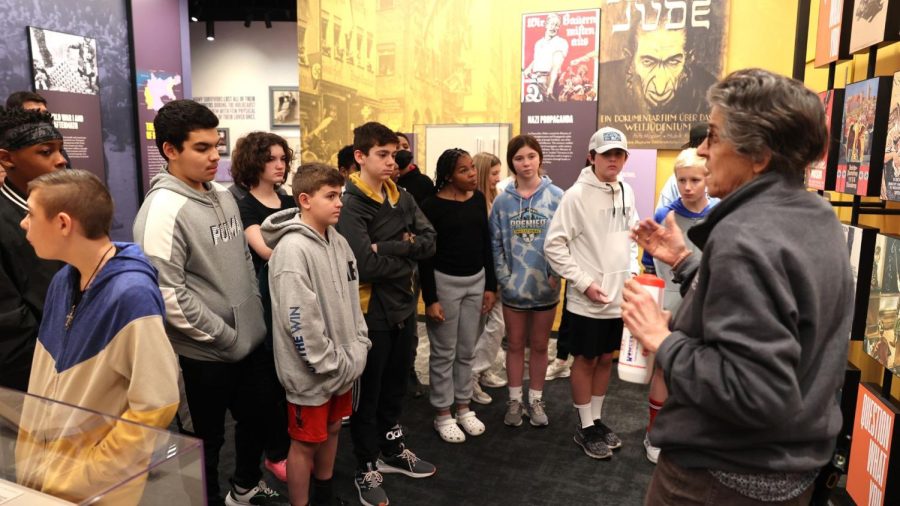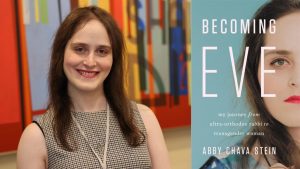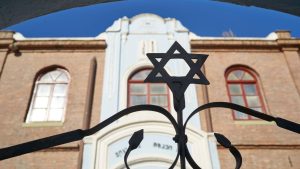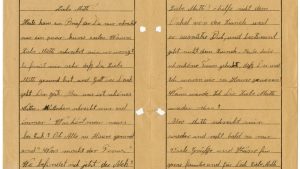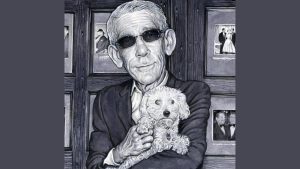Visiting the Holocaust Museum from a student’s perspective
In 2025, all Missouri school districts will be required to provide Holocaust education for students in grades 6 through 12.
Docent Vera Emmons leads Ladue Middle School students on a tour of the St. Louis Kaplan Feldman Holocaust Museum earlier this month. Photo: Bill Motchan
Published February 23, 2023
A first-time visit to the St. Louis Kaplan Feldman Holocaust Museum can be a moving experience, especially for a 13-year-old.
“It was eye-opening,” said Pranav Matthew.
“Sorrowful,” said Gergo Szilagyi.
“It made me think. . . why would somebody do this to someone because of their religion?” said Jackson Brinton.
“I learned about how my religion was struggling years ago,” said Baleigh Swillinger.
These were some of the reactions from students in the Ladue Middle School second-period social studies class after their field trip to the St. Louis Kaplan Feldman Holocaust Museum on Feb. 6. One day later, the Jewish Light sat in during the morning class where the students deconstructed what they saw and heard. In the discussion, they answered the question: “What was something you learned at the museum that you didn’t know before about the Holocaust?”
“I think it was the fact that people thought it would just blow over,” said Emily Tinnin. “The hatred and people being biased, and they didn’t think it would spiral into this kind of issue and that’s why they didn’t get out of Germany until it was super, super risky to get out.”
“I didn’t know they weren’t referred to by their names, but as numbers. They had all of their identity stripped away,” said Emiliah Brown.
The museum trip was the culmination of a lesson plan focusing on the Holocaust, said Erin Hurley, a Ladue Middle School social studies teacher.
“The goal was to wrap up our learning,” Hurley said. “We’ve spent about two weeks on the Holocaust and we wanted to make it personal. It’s part of our curriculum. During the past two years during COVID, we Zoomed with the Illinois Holocaust Museum in Skokie.”
Now that the St. Louis Holocaust museum has reopened, it provides an ideal resource for schools to supplement their classroom learning. Nearly 20,000 students are expected to visit the museum in 2023. During the third week in February, about 200 Ladue Middle School seventh grade students viewed the museum exhibits, accompanied by a volunteer who provided context. Ladue Horton Watkins High School 10th grade world history students also spent time in the museum.
On July 1, 2022, Missouri became the 20th state to require Holocaust education in curricula for secondary schools. The legislation will implement a pilot program in 25 school districts in the 2023-2024 school year and expand to all Missouri school districts by the 2025-2026 school year. Some school districts have made Holocaust education a priority for years. In Ladue, raising awareness about the Holocaust is consistent with the school district’s emphasis on diversity, according to Dr. Jennifer Riesenmy, the district’s coordinator of diversity, equity, and inclusion.
“It’s really important because in our district we have about 60 languages spoken and we’re very diverse,” Riesenmy said. “We’re not just diverse racially and ethnically, but in religion and socio-economic status. I like to see examples of that and advocate for promotion that diversity goes beyond ethnicity and race. We have a large Jewish population here at school so to be able to learn about that part of your heritage is essential.”
As part of the middle school social studies lesson plan, each student created a Holocaust memorial based on their studies and experiences at the museum. The day after their visit to the museum, Hurley’s class members described their memorial projects. Some students used 3D imaging and video memorials and others developed dioramas and poignant handmade displays.
Irene Murphy held up her memorial, a pair of glasses and a shoe. Alyssa Wong made a paper flower with torn edges to symbolize broken glass. Mia Rossetti put together a book with Holocaust victims’ names. She said her memorial also symbolized burning books. Emily Tinnin made a small house.
“It’s a typical living room from the 1940s,” Tinnin said. “Instead of a normal room, the furniture has been knocked over to show how Nazis came in and raided homes, and took away what the homeowners had worked for, then put them in concentration camps all because they became scapegoats. It was unfair and unjust.”
Baleigh Swillinger’s memorial was, she said, “A Jewish star over torn pieces of paper to represent the 1.5 million children who died in the Holocaust.”
Saydee Edrington created a small, cramped home to symbolize life in the ghetto. The residents, she said, had few possessions remaining but “they still fought through it.”
Emiliah Brown also built a small structure as a memorial to those who lived in the ghetto. “It was inhumane,” she said, “And on the outside, it says, ‘We resist.’”
As the class discussion of the museum visit ended, Hurley explained the importance of studying the Holocaust.
“This is why we spend the time to go over this piece of history with you,” Hurley said. “I know it’s a hard piece, but it’s a cautionary tale about what can happen if a group is targeted and becomes a scapegoat and at what point do we try to stop it. There’s a display at the museum that says, ‘The Holocaust was not inevitable.’ There was a time when it could have been stopped, while it was happening. What could have happened differently?
“It’s important as we move to the future and for you in the next generation to make sure you learn from the past and be mindful of what can happen if you don’t stand up for a group of people who are targeted.”



